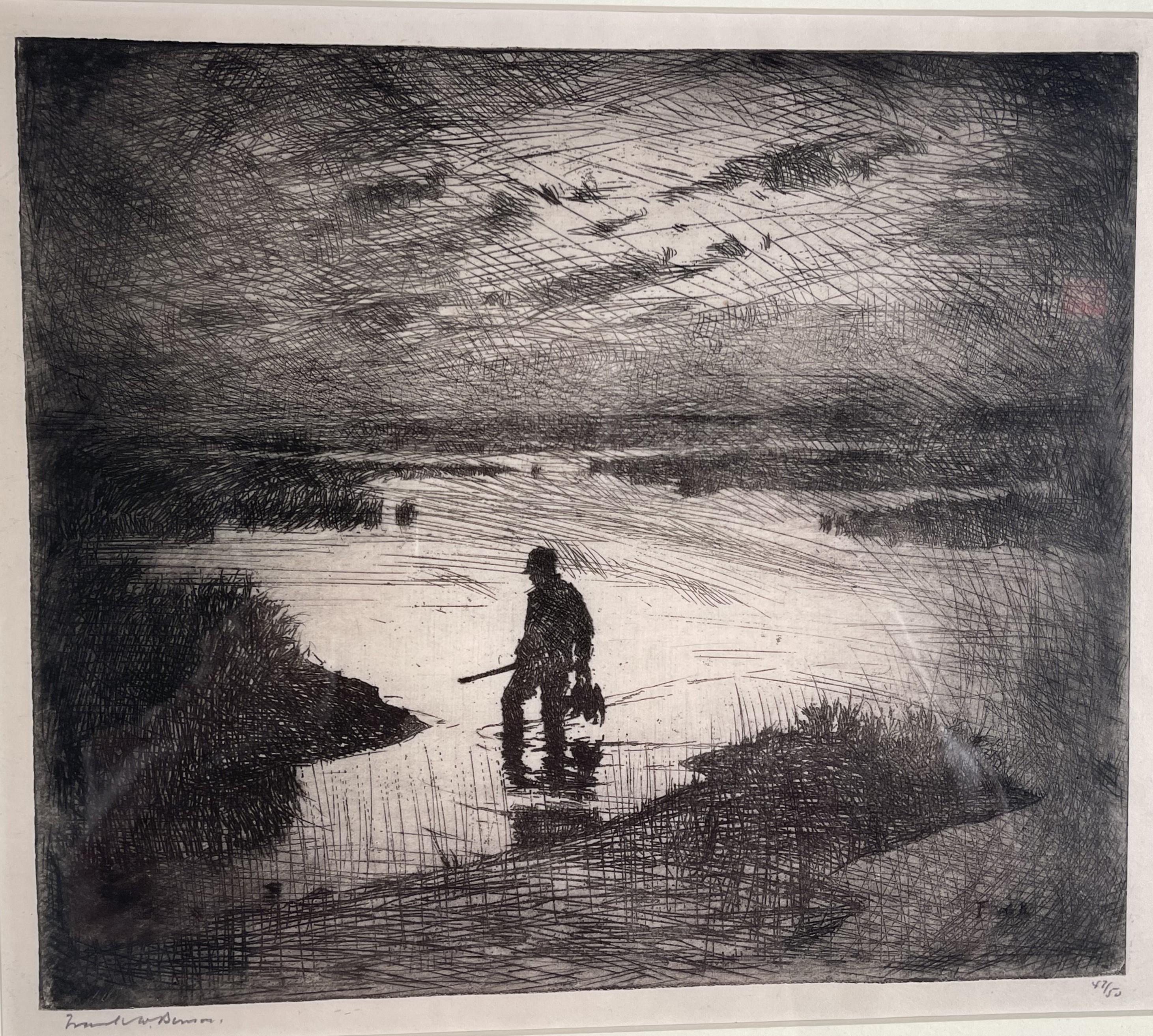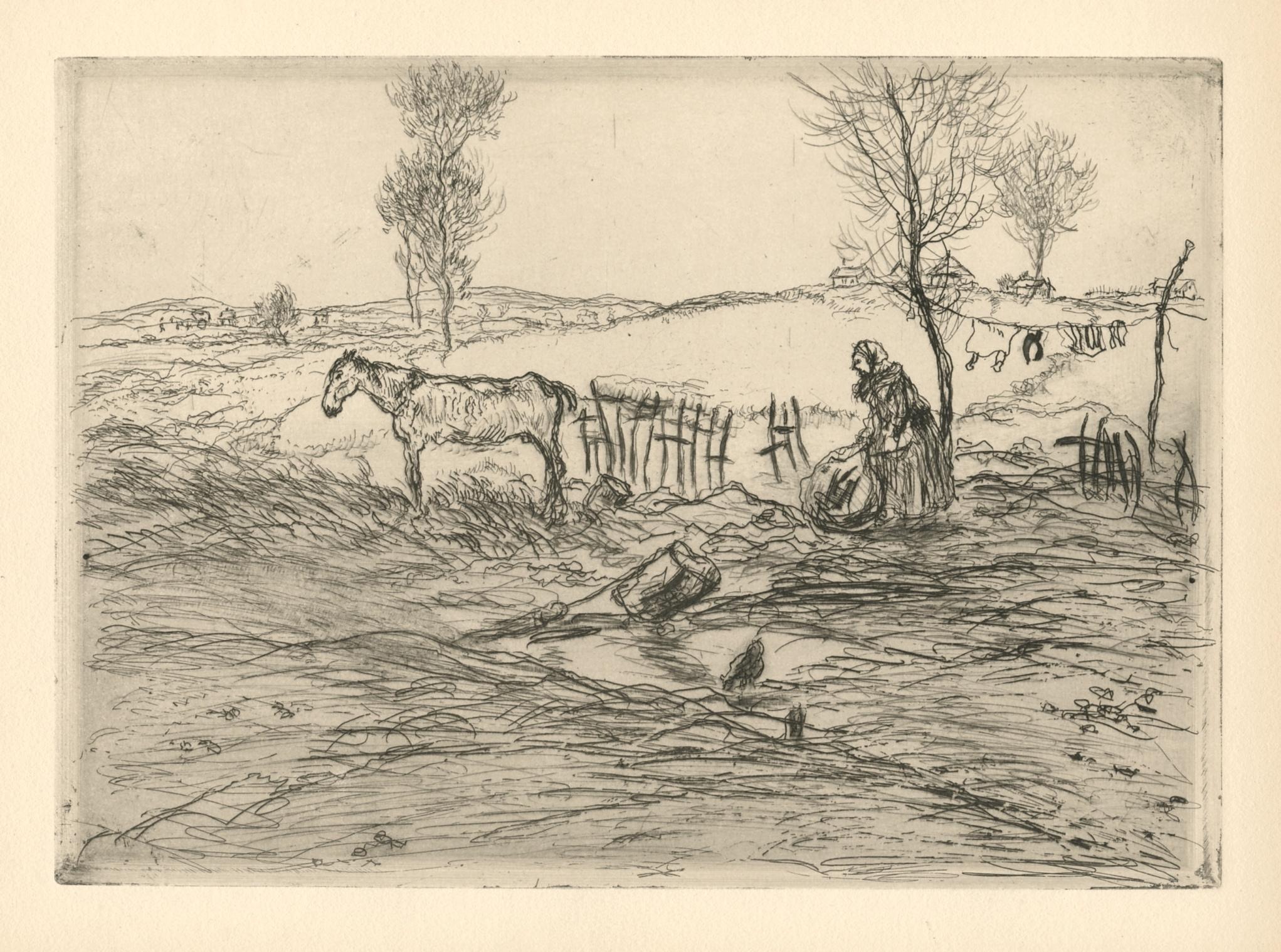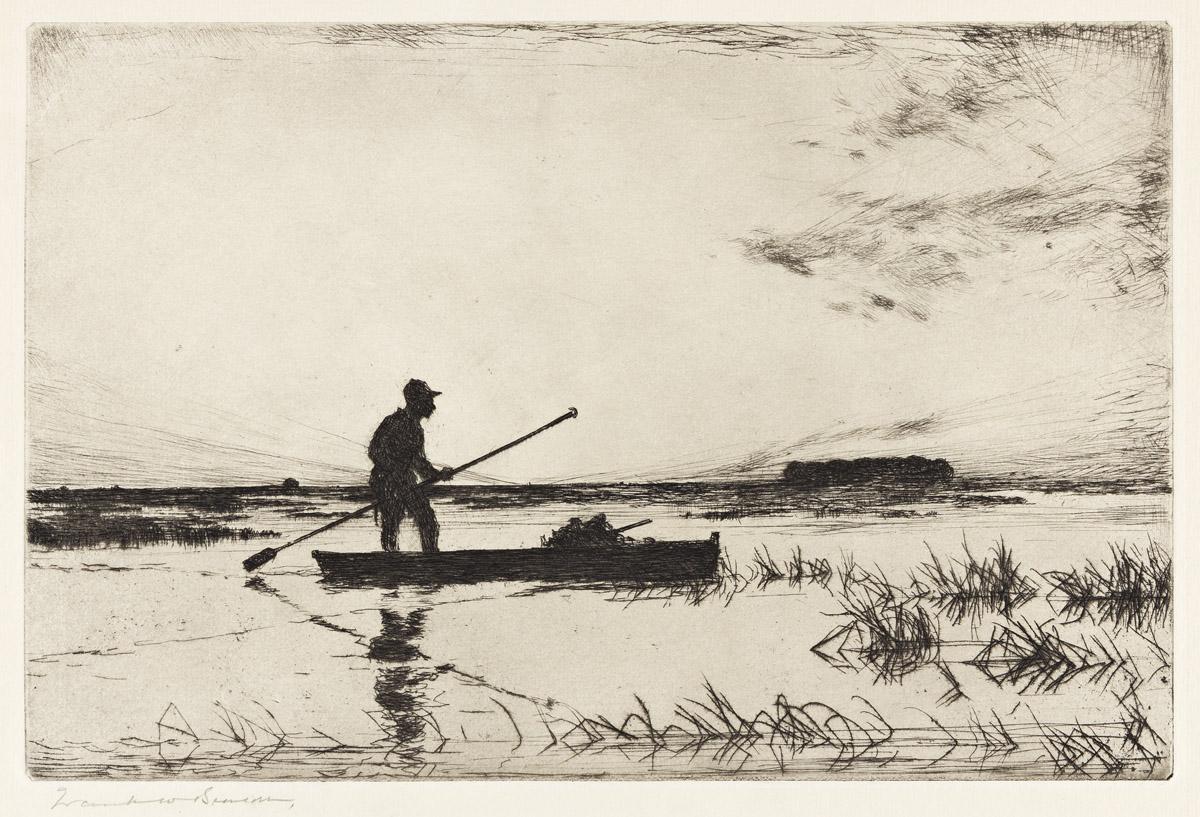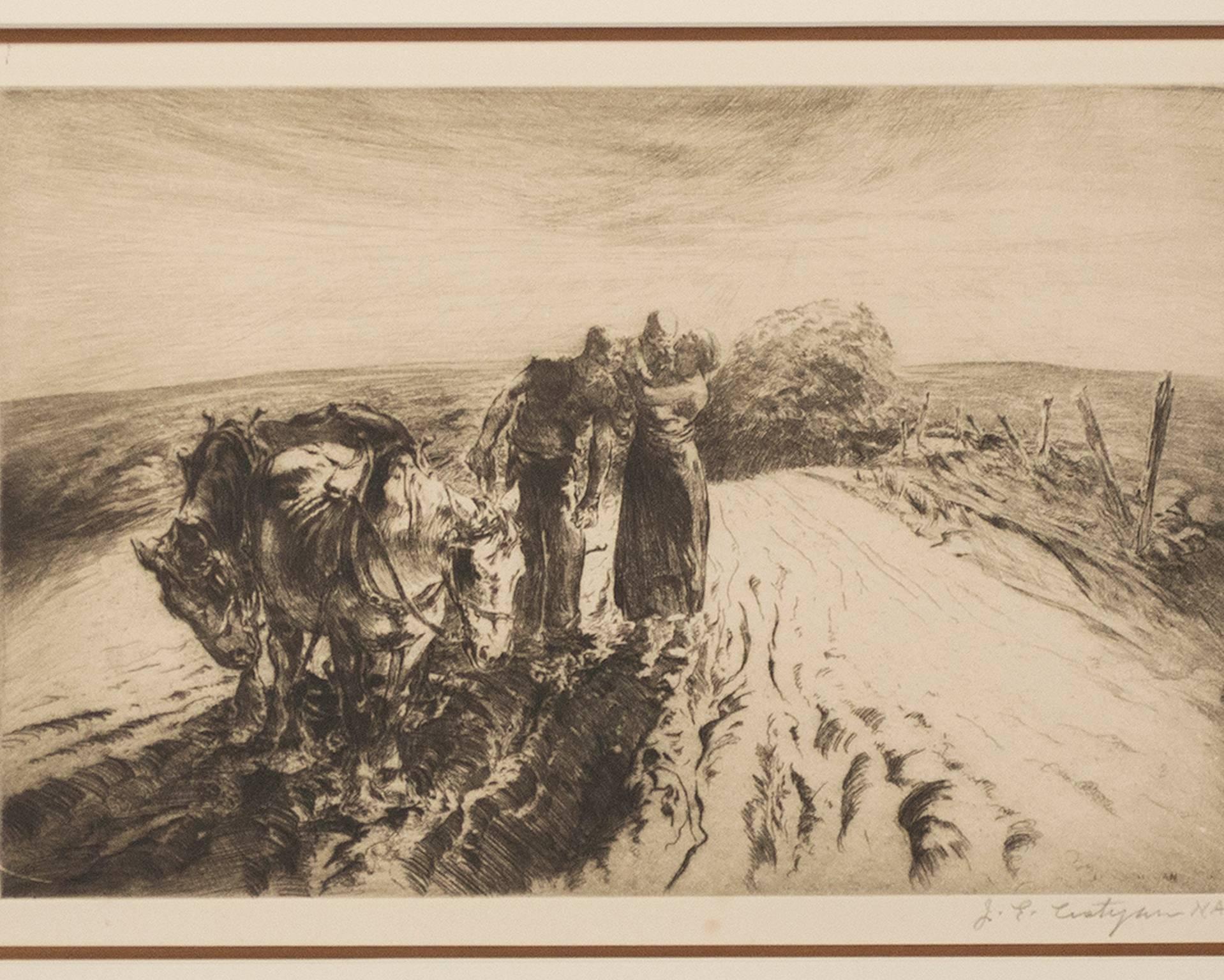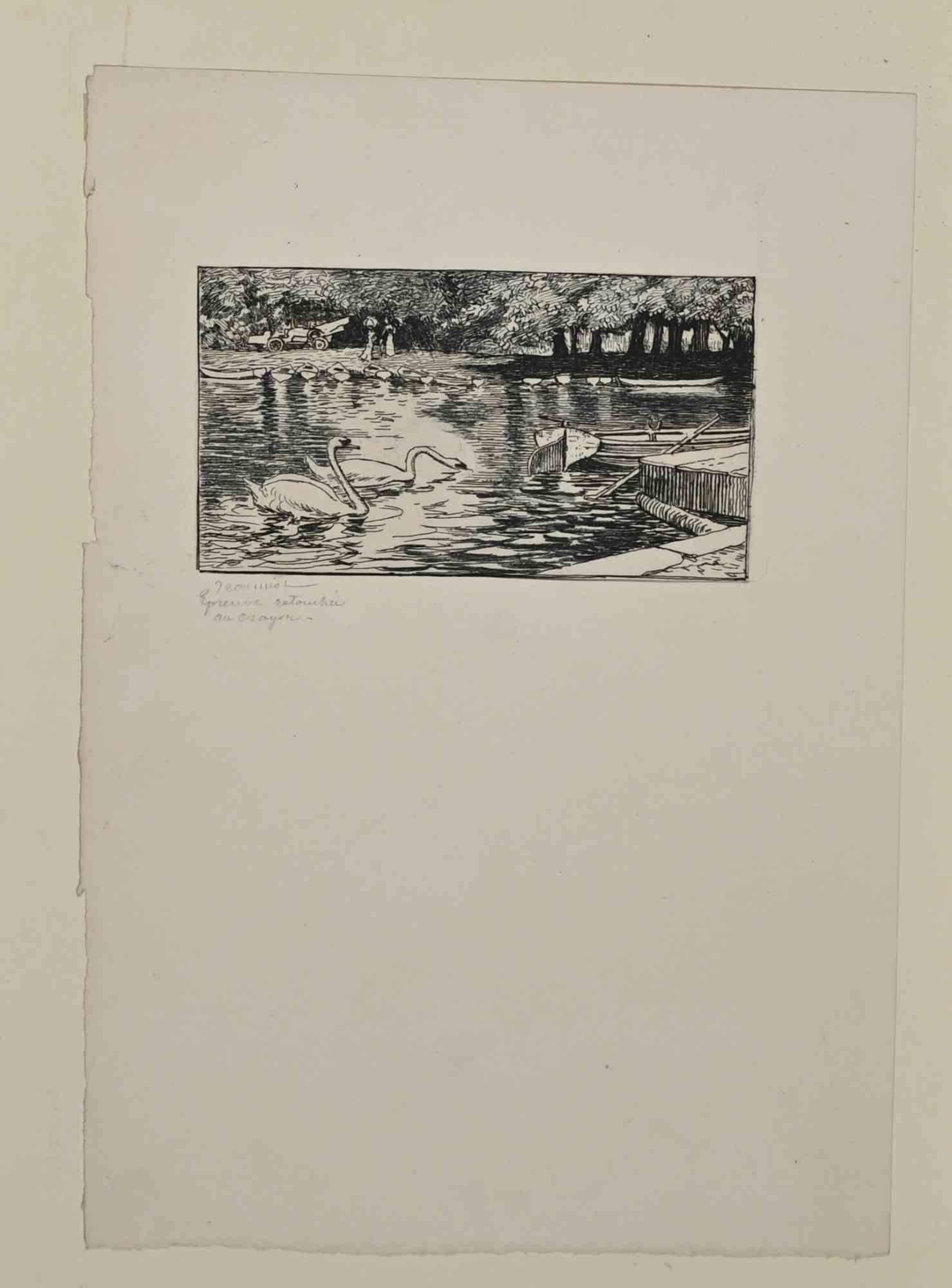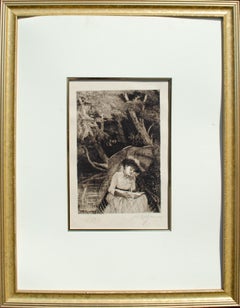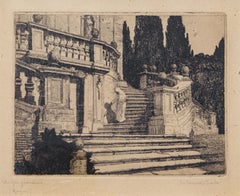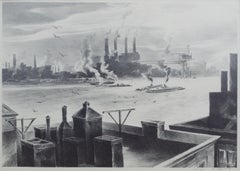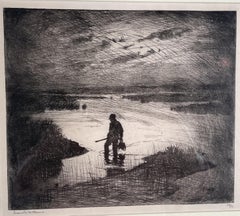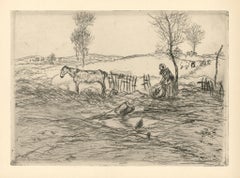Items Similar to Frank Weston Benson Original Etching, Early 20th Century
Want more images or videos?
Request additional images or videos from the seller
1 of 9
Frank Weston BensonFrank Weston Benson Original Etching, Early 20th Century20th Century
20th Century
$8,000
£6,209.92
€7,044.01
CA$11,422.72
A$12,586.92
CHF 6,528.63
MX$149,704.50
NOK 82,585.28
SEK 77,364.89
DKK 52,608.14
About the Item
Frank Weston Benson (American, 1862-1951)
Untitled, 20th Century
Etching
Sight: 10 1/3 x 12 1/8 in.
Framed: 16 3/4 x 19 x 1/2 in.
Signed lower left
Numbered lower right: 27/50
Born in Salem, Massachusetts, Frank Benson was a painter of impressionist* seascapes and landscapes, often with figures posed by his wife and children, and also numerous hunting scenes. He spent most of his life in the seaport town of Salem and loved trekking through the countryside for his subject matter, especially wildlife. He is credited with making the American sporting print a distinct art form and for being one of the outstanding 20th-century wildlife printmakers.
He was a teacher in Portland, Maine at The Society of Art, and in Boston at The Museum of Fine Arts, where he and his good friend Edmund Tarbell established it as a top-notch institution.
He studied art in Boston at the Museum School of Fine Arts, and in 1883 in Paris with Gustave Boulanger and Jules Lefebvre at the Academie Julian* during the French Impressionism movement. By the early 1900s, he had a very successful career and was a member of the Ten American Painters*, a prestigious group of early impressionists.
He was a life-long hunter, and it was said that he knew birds as only a sportsman can. He worked in both etching* and drypoin* and was lauded for his clear design, the naturalness of his birds and hunters, and the mastery of etching techniques.
In 1900, Benson discovered the pleasures of North Haven Island off the coast of Maine, and from that time, he and his family spent much time there, even purchasing a farm where he had a studio. There his style became increasingly impressionistic.
Midway through his career as a recognized oil painter, he began to paint with watercolors, perhaps inspired by Winslow Homer's use of that medium to show hunting scenes in the Adirondacks. In 1921, Benson became a serious watercolorist while on a fishing expedition to the Gaspe Peninsula of Quebec, and from that time until his death in 1951, he created nearly six-hundred watercolors. He also did an occasional still life with Oriental themes such as Confucius circa 1930.
In 2005, The Cahoon Museum of American Art in Cotuit, Massachusetts had an exhibition of work by Benson titled Frank W. Benson---Sportsman/Etcher.
Bio sourced from the Archives of AskArt.
- Creator:Frank Weston Benson (1862-1951, American)
- Creation Year:20th Century
- Dimensions:Height: 16.75 in (42.55 cm)Width: 19 in (48.26 cm)Depth: 0.5 in (1.27 cm)
- Medium:
- Movement & Style:
- Period:
- Condition:Not examined outside of frame; artwork and glass slightly loose in frame.
- Gallery Location:New York, NY
- Reference Number:Seller: BM41stDibs: LU2211212690542
About the Seller
5.0
Vetted Professional Seller
Every seller passes strict standards for authenticity and reliability
1stDibs seller since 2022
100 sales on 1stDibs
Typical response time: 1 to 2 days
- ShippingRetrieving quote...Shipping from: New York, NY
- Return Policy
More From This Seller
View All19th Century Engraving by American Impressionist Herman Hyneman
By Herman Hyneman
Located in New York, NY
Herman Hyneman (American, 1849-1907)
Untitled, c. 1880
Engraving
Sight: 13 x 8 1/2 in.
Framed: 26 1/2 x 20 1/2 x 3/4 in.
Signed bottom
The following is from Peter Jung who credits "a friend named Jeff Gold on Long Island."
Herman N. Hyneman (1849 - 1907) was born in 1849 to one of the most prominent Jewish families in Philadelphia. Unlike most Jewish families of the time, his embraced and encouraged his artistic talent. In 1874, Hyneman followed his first cousin Moses Ezekiel, National Academy member, to Europe to study. They first went to Germany and then to France where Hyneman began eight years of study with Leon Bonnat, the French Master.
In Paris, the twenty-five year old Hyneman resided in a studio building at 75 Boulevard Clichy, with expatriates Frederic Arthur Bridgeman, Charles Sprague Pearce, Milne Ramsey, and Edwin Blashfield. Hyneman was clearly exposed to the works of these more experienced artists, as well as that of Walter Gay.
In 1879, one of Hyneman's genre paintings, entitled "Desdemona", was accepted into the Paris Salon. That painting received favorable reviews both in Europe, and later in Philadlephia where it was exhibited alongside the works of other Philadelphia Artists exhibiting at the Salon that included Thomas Eakins, Pearce, Edward May...
Category
1880s American Impressionist Portrait Prints
Materials
Engraving
DY Cameron 19th c. European Village Etching
By David Young Cameron
Located in New York, NY
D.Y. (David Young) Cameron (Scottish, 1865-1945)
The Border Tower, c. 1893
Etching
Sight: 9 x 13 1/4 in.
Framed: 15 1/4 x 19 1/2 x 1/2 in.
Signed in pencil lower right
Cameron trained at the Glasgow and Edinburgh Schools of Art in the early 1880s and was at first associated with the Glasgow Boys. He became a leader in the Scottish etching...
Category
1890s Academic Landscape Prints
Materials
Etching
Roman Architectural Etching by Carlo Casanova, c. 1900
Located in New York, NY
Carlo Casanova (Italian, 1871-1950)
Vecchio Giardino (Old Garden), c. 1900
Etching
Sight: 7 1/4 x 8 1/2 in.
Framed: 11 1/2 x 12 x 1/2 in.
Titled lower left, signed lower right.
Car...
Category
20th Century Figurative Prints
Materials
Etching
Henry Winzenreid Modernist Lithograph of Steamboats and Factories
Located in New York, NY
Henry Winzenreid (American, 1892-1981)
Untitled (Steamboats and Factories), 20th century
Lithograph
Sight size: 10 x 14 in.
Framed: 17 1/8 x 21 1/4 in.
Signed lower right: AP/60 Wi...
Category
20th Century American Realist Landscape Prints
Materials
Lithograph
Joseph Pierre Nuyttens Etching, Possibly Marshal Ferdinand Foch
Located in New York, NY
Joseph Pierre Nuyteens (Belgian-American, 1885-1960)
Untitled (Possibly Marshal Ferdinand Foch), 20th century
Etching
Sight: 14 1/2 x 12 in.
Framed: 20 1/4 x 16 1/2 x 1 in.
Signed in...
Category
20th Century French School Portrait Prints
Materials
Etching
Hamburg Harbor Etching by Hans Kaumann, c. 1920
Located in New York, NY
Hans Kaumann (German, 20th Century)
Hamburg Harbor, c. 1920
Etching
12 x 16 in.
This historic print depicting Hamburg Harbor offers a look into the past, presenting a c. 1920s view ...
Category
1920s Landscape Prints
Materials
Etching
You May Also Like
DUSK
By Frank W. Benson
Located in Portland, ME
Benson, Frank. DUSK. P.34. Etching on zinc, 1914. Edition of 50, signed and numbered 47/50 in pencil. 9 1/4 x 10 7/8 inches, plate, framed to 17 x 21 inches.
This atmospheric image, ...
Category
1910s Prints and Multiples
Materials
Etching
Figure - Original Etching by Henri Farge - Early 20th century
Located in Roma, IT
Figure is an original modern artwork realized in the first decades of the 20th Century by the French artist Henri Farge (1884-1970).
Original etching on i...
Category
Early 20th Century Modern Figurative Prints
Materials
Etching
"La terrain perdu" original etching
By Jean-Francois Raffaelli
Located in Henderson, NV
Medium: original etching and drypoint. Catalogue reference: Delteil 16. Printed in 1909 and published in Paris by Henri Floury. Plate size: 5 1/2 x 7 3/4 inches (142 x 197mm). Not si...
Category
Early 1900s Prints and Multiples
Materials
Etching
The Punter
By Frank Benson
Located in New York, NY
A superb, richly-inked impression of this etching. Edition of 150. Signed in pencil, lower left.
Category
1920s American Impressionist Abstract Prints
Materials
Etching
"When Day is Done, " an Original Etching signed by John Edward Costigan
By John Edward Costigan
Located in Milwaukee, WI
"When Day is Done" is an original etching and aquatint signed lower right in pencil by the artist John Edward Costigan. It depicts a man and a woman with their young child at the end...
Category
1930s Post-Impressionist Figurative Prints
Materials
Etching, Aquatint
By the Water - Original Etching G. Jeanniot - Late 19th Century
By Pierre Georges Jeanniot
Located in Roma, IT
By the Water is an Original Etching realized by Pierre Georges Jeanniot (1848-1934).
Hand-Signed and some notes by the artist on the lower left corner.
Good condition on a cream co...
Category
Late 19th Century Modern Landscape Prints
Materials
Etching
More Ways To Browse
Vintage Sporting Art
Frank Benson Etchings
Picasso Toro Y Toreros 1959
Pierre Auguste Renoir Le Chapeau Epingle
Pope Innocent
Renoir Chapeau Epingle
Robert Kasimir Etchings
Romare Bearden Jazz Series
Roy Lichtenstein Signed Lithograph
Salvador Dali Paradise
Salvador Dali Signed Prints Don Quixote
Salvador Dali Untitled
Shepard Fairey Power
Signed Leroy Neiman Wall Street
Signed Queen Elizabeth
Stanislao Lepri
The Fables Chagall
Vintage Berry Picker
